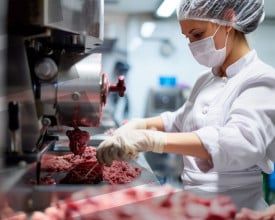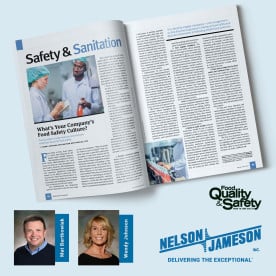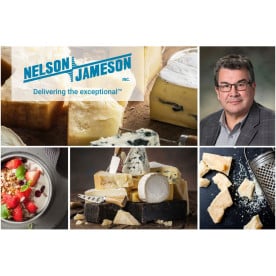Monthly Archives: March 2010
- March 29, 2010
According to statistics found on the glove manufacturing website AnsellPro.com:
- The average indemnity compensation for an OSHA recordable hand/finger injury is approximately $3,846.00
- The average medical payment is approximately $2,600.00
- There are approximately 439,000 disabling yearly hand and finger injuries which equates to a cumulative cost into the millions each year.
Isn’t that worth the cost of a pair of cut-resistant gloves?
Although there are no OSHA regulations specific to cut-resistant gloves, OSHA 1910.138(a) and (b) do pertain to hand protection.
- 1910.138(a) General Requirements. Employers shall select and require employees to use appropriate hand protection when employees’ hands are exposed to hazards from skin absorption of harmful substances; severe cuts or lacerations; severe abrasions:
- March 25, 2010
Imagine a food processing plant without water. Sure there are some that are going as dry as possible to avoid microbiological problems, but for most water plays multiple roles in the manufacturing process. Well or city water for potable and non potable streams, make-up water for reconstituting ingredients, cooling water for heat exchangers, condensate (cow) water for soft rinse applications, water carrying permeate from UF units, water for cleaning chemicals and equipment rinses, effluent water to carry waste to treatment plants, laboratory water purified for various tests, potable water for personnel use. You get the picture – water is everywhere in a production operation.
Depending on use, however, each of these “waters” must have certain qualities.
- Is potable water chlorinated?
- Is the coliform count acceptable?
- Does it have heavy metals like copper or iron?
- Is the hardness softened for cleaning detergents?
- Is permeate clear indicating good UF performance?
- What is the conductivity of laboratory water or cow water?
- Are cleaning solutions sufficiently concentrated, acid, alkaline, or do sanitizing rinses have sufficient strength?
- What is the total solids, BOD, or COD of effluent?
These are just some of the variables which must be monitored when using water effectively in a processing plant.
- March 18, 2010
A interesting article in Dairy Foods, recently appeared with the title "Lab Testing Dynamics, A Discussion with Industry Experts." In the article, Dairy Foods interviewed a few of our vendors, asking the question; “What are the most vulnerable safety points in dairy foods manufacturing”?
The responses given were:
Interview #1: “The presence of antibiotic residue in milk is always a concern. Even at the best run farms, accidents can happen. That is why the industry has a strong program for testing milk to insure that it is free of antibiotic residues. The tests used to detect the presence of antibiotics in milk are divided into two basic classes. There are fast, reliable tests based on antibody/antigen reactions. They are generally limited to detecting a single antibiotic or a class of antibiotics. The other technology uses the growth of special strain of bacteria that is very sensitive to antibiotics. These tests can detect a broad spectrum of antibiotics from many different classes; however, they generally take two to three hours to complete”.The kits referred to in this response are our DSM Delvotest kits, which are item numbers: NCIMS use kits; 233-3006 (Delvotest P, 25 test kit), 233-3480 (Delvotest P, 480 test kit), 233-3009 (Delvotest SP, 25 test kit). We also offer the SP-NT (which stands for no tablet), item # 233-3424 (25 test kit) and the 233-3148 (100 test kit), which at the present time do not have NCIMS certification.





